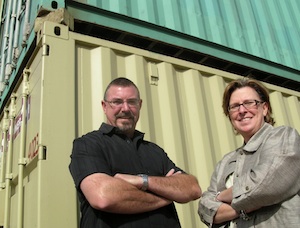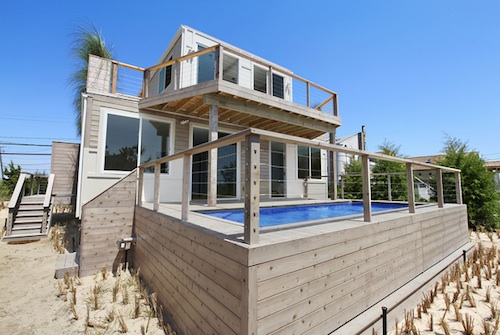Trends: Cargo Container-Based Construction
Shipping containers are the new Legos for innovative builders.
In the wake of economic challenges, concerns over the environment, and significant natural disasters, many industries are seeking alternative building approaches. One of these approaches has been to consider the revolutionary advances that cargo contained-based construction has made. Here are ten reasons that illustrate why this type of construction is so compelling.
1. Commercial and Residential Application. While traditional construction has had two distinctive practices for commercial and residential buildings as well as regional differences in construction, the container model works across both, offering a wide range of applications being used around the world in a standardized way. This includes everything from residences and multifamily units to motels and offices to pop-up shops.The containers have even been used for schools and dormitories.

In providing a solution for disasters or to help with humanitarian efforts during the war in Iraq and Afghanistan, container-based construction has provided a practical solution.
2. Availability. Retired shipping containers are abundant in the United States with 21,000 shipping containers arrive in the United States every day. Port authorities estimate that over 700,000 used shipping containers are stockpiled on prime waterfront real estate without a significant use, purpose, or method for disposal. Many cargo containers originate from China and are used only on their maiden voyage overseas. Since the U.S. imports many more manufactured goods than it exports in shipping containers, most remain here, wasting precious space in our ports and landfill.
3. Protective and Weather Resistance. In exceeding all building and safety codes, the containers can easily withstand 150 per hour winds when used in residential and commercial construction. Their design offers a level of infrastructure protection not found in traditional construction. Also, residents and tenants alike know that their walls have traveled the world and have a story to tell. They’ve seen the ocean and other countries and have stood the test of time.

4. Time and Cost Savings. Containers end up saving 60% of the framing cost and cut the time in half for construction. The savings also come from the labor that goes into the containers as well as long-terms savings in terms of reduced maintenance and repair as well as energy efficiency savings.
5. Strength and Durability. Strength and durability of shipping container -based construction far exceeds the traditional stick built and most modular construction. Compared to traditional construction that uses wood, which can rot over time, the containers will experience no rot because the containers are made of steel. In addition, the frame can withstand severe damage in natural disasters such as earthquakes and hurricanes.
6. Creativity and Flexibility. Working with different materials and applications provides a way to think more creatively about the construction process. And, despite the fact that the containers come in pretty standard sizes, the actual possibilities are endless. The buildings provide an elegant balance of simplicity with inherent character and personalized style in each wall.
(Want to see some fabulous examples of shipping container homes? Click on the beach house above to visit a separate article that features 23 innovative homes based on shipping containers. Photo credit for above image: beachboxit.com)
7. Environmentally Responsible. Containers are much more environmentally responsible in terms of materials, much of which has been essentially recycled, as well as due to construction practices that do not rely on trees for materials and the overall use once they are in use, including energy efficiencies.
8. Expands Shelter Accessibility. For developing countries as well as domestic housing markets where quality shelter is difficult to come by, the containers are providing and effective solution. With a price tag as low as $900 each, used shipping containers offer a relatively inexpensive construction medium. Even when purchased new, shipping containers rarely cost more than $6,000.
9. Mobility. Because they can be stacked on top of each other and moved quite readily, they are considered to have high mobility, which makes them more convenient than other buildings. The interlocking mechanism of the containers facilitates mobility so that structures made from them can be easily disassembled, moved, and reassembled.
10. Higher Profitability. With reduced costs for - framing and labor and the ability to generate revenue sooner by expediting the building timeline, those utilizing such a construction approach are achieving higher profitability.
With the U.S. new construction industry desperate for ways to cut costs without undermining quality, green home construction gaining significant momentum, and a growth rate from $49 billion to $140 billion (representing 20% of new construction) forecasted over the next five years, shipping container-based construction is an extraordinarily well-positioned solution. CS
 Leslie Horn is CEO of Three Squared, Inc., a property development market leader in the cargo-based construction industry.
Leslie Horn is CEO of Three Squared, Inc., a property development market leader in the cargo-based construction industry.
This real estate development firm uniquely and effectively employs shipping containers to build safe, cost-efficient and environmentally-friendly residential and commercial structures across the globe.
Learn more online at www.threesquaredinc.com.
















